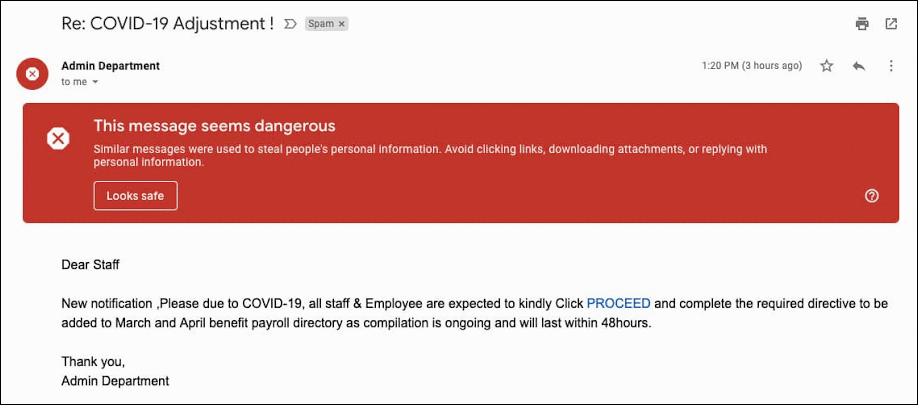
Threat Intelligence |
Sponsored by |

|
 Satellites make it possible for governments to provide essential services, such as national defense, navigation, and weather forecasting. Private ventures use satellites to offer highly desired services that include video program distribution, telecommunications, and Internet access. The Russian launch of a satellite, with nuclear power and the likely ability to disable satellites, underscores how satellites are quite vulnerable to both natural and manmade ruin. more
Satellites make it possible for governments to provide essential services, such as national defense, navigation, and weather forecasting. Private ventures use satellites to offer highly desired services that include video program distribution, telecommunications, and Internet access. The Russian launch of a satellite, with nuclear power and the likely ability to disable satellites, underscores how satellites are quite vulnerable to both natural and manmade ruin. more
 In this article, I present an overview of a series of 'proof-of-concept' studies looking at the application of domain-name entropy as a means of clustering together related domain registrations, and serving as an input into potential metrics to determine the likely level of threat which may be posed by a domain. more
In this article, I present an overview of a series of 'proof-of-concept' studies looking at the application of domain-name entropy as a means of clustering together related domain registrations, and serving as an input into potential metrics to determine the likely level of threat which may be posed by a domain. more
 OpenXDR is one of the most cost-effective SIEM alternatives that help businesses detect and mitigate threats within hectic modern architectures. A single cyber incident impacts every aspect of a business -- from system downtime, revenue losses, and reputation damage to disrupted operations. more
OpenXDR is one of the most cost-effective SIEM alternatives that help businesses detect and mitigate threats within hectic modern architectures. A single cyber incident impacts every aspect of a business -- from system downtime, revenue losses, and reputation damage to disrupted operations. more
 While threat actors can use any domain across thousands of top-level domains (TLDs), they often have favorites. For instance, you may be familiar with Spamhaus's 10 most-abused TLDs for spamming. WhoisXML API researchers recently built on this list by analyzing 40,000 newly registered domains (NRDs) that sported some of the listed unreputable TLDs. We called this study "DNS Abuse Trends: Dissecting the Domains Under the Most-Abused TLDs." more
While threat actors can use any domain across thousands of top-level domains (TLDs), they often have favorites. For instance, you may be familiar with Spamhaus's 10 most-abused TLDs for spamming. WhoisXML API researchers recently built on this list by analyzing 40,000 newly registered domains (NRDs) that sported some of the listed unreputable TLDs. We called this study "DNS Abuse Trends: Dissecting the Domains Under the Most-Abused TLDs." more
 Subdomains help organizations sort different sections of their websites neatly. Looking at the subdomains of some websites, for example, we usually see subdomains like shop[.]domain[.]com and blog[.]domain[.]com, which help users navigate the sites efficiently. But we couldn't help but notice subdomains that might be revealing a lot about a company's Internet infrastructure and resources. more
Subdomains help organizations sort different sections of their websites neatly. Looking at the subdomains of some websites, for example, we usually see subdomains like shop[.]domain[.]com and blog[.]domain[.]com, which help users navigate the sites efficiently. But we couldn't help but notice subdomains that might be revealing a lot about a company's Internet infrastructure and resources. more
 Cyber attackers are very skilled at infiltration. They'd find ways into a house through cracks and holes that the homeowner doesn't know about. Analogically speaking, that's what the new cyber attack group dubbed "Hafnium" did when they identified several zero-day Microsoft Exchange vulnerabilities to get into target networks. With thousands of users for every Microsoft Exchange server, the attack has far-reaching implications. First, it establishes the presence of a new threat actor group in town. What else could they be up to? more
Cyber attackers are very skilled at infiltration. They'd find ways into a house through cracks and holes that the homeowner doesn't know about. Analogically speaking, that's what the new cyber attack group dubbed "Hafnium" did when they identified several zero-day Microsoft Exchange vulnerabilities to get into target networks. With thousands of users for every Microsoft Exchange server, the attack has far-reaching implications. First, it establishes the presence of a new threat actor group in town. What else could they be up to? more
 A recent survey conducted by the Neustar International Security Council confirmed the heightened interests on domain name system (DNS) security. The survey reveals that over three-quarters of cybersecurity professionals anticipate increases in DNS attacks, especially with more people shopping online amid the pandemic. Yet, close to 30% have reservations about their ability to respond to these attacks. more
A recent survey conducted by the Neustar International Security Council confirmed the heightened interests on domain name system (DNS) security. The survey reveals that over three-quarters of cybersecurity professionals anticipate increases in DNS attacks, especially with more people shopping online amid the pandemic. Yet, close to 30% have reservations about their ability to respond to these attacks. more
 When a brand goes so far as to ask a domain name registrar for Whois (the registration contact details) of a potentially abusive domain name, there's likely a lot at stake. Most often, the request is prompted by consumer safety concerns, such as the risk to consumers posed by a malicious site. Other times, the demand has a simple goal: to have a dialog with the registrant about the use of trademarks or other intellectual property in order to avoid extreme action. more
When a brand goes so far as to ask a domain name registrar for Whois (the registration contact details) of a potentially abusive domain name, there's likely a lot at stake. Most often, the request is prompted by consumer safety concerns, such as the risk to consumers posed by a malicious site. Other times, the demand has a simple goal: to have a dialog with the registrant about the use of trademarks or other intellectual property in order to avoid extreme action. more
 Over the last few years, it's become clear that abuse of the Domain Name System -- whether in the form of malware, botnets, phishing, pharming, or spam -- threatens to undermine trust in the Internet. At Public Interest Registry, we believe that every new .ORG makes the world a better place. That means anything that gets in the way of that is a threat, and that includes DNS Abuse. more
Over the last few years, it's become clear that abuse of the Domain Name System -- whether in the form of malware, botnets, phishing, pharming, or spam -- threatens to undermine trust in the Internet. At Public Interest Registry, we believe that every new .ORG makes the world a better place. That means anything that gets in the way of that is a threat, and that includes DNS Abuse. more
 Cybercriminals are increasingly targeting Personally Identifiable Information (PII). The reason being "data is the new gold" in this digital world, and the more sensitive some data is, the more value it has. There is no more sensitive data than personally identifiable information because it contains enough information to identify you digitally. Examples of personally identifiable information include name, email, contact number, address, social security number, tax file number, banking or financial information, and more such data that helps identify you. more
Cybercriminals are increasingly targeting Personally Identifiable Information (PII). The reason being "data is the new gold" in this digital world, and the more sensitive some data is, the more value it has. There is no more sensitive data than personally identifiable information because it contains enough information to identify you digitally. Examples of personally identifiable information include name, email, contact number, address, social security number, tax file number, banking or financial information, and more such data that helps identify you. more
 As the world becomes more and more reliant on electronics, it's worth a periodic reminder that a large solar flare could knock out much of the electronics on earth. Such an event would be devastating to the Internet, satellite broadband, and the many electronics we use in daily life. A solar flare is the result of periodic ejections of matter from the sun into space. Scientists still aren't entirely sure what causes solar flares, but they know that it's somehow related to shifts in the sun's magnetic field. more
As the world becomes more and more reliant on electronics, it's worth a periodic reminder that a large solar flare could knock out much of the electronics on earth. Such an event would be devastating to the Internet, satellite broadband, and the many electronics we use in daily life. A solar flare is the result of periodic ejections of matter from the sun into space. Scientists still aren't entirely sure what causes solar flares, but they know that it's somehow related to shifts in the sun's magnetic field. more
 Clarivate has once again surveyed global business leaders about the importance of domain names to their organizations, including the role of domains as intellectual property (IP) assets. The 2020 survey followed up on our 2019 survey, revealing key year-over-year trends in how organizations manage, secure and budget for domain names. In this blog, we review key trends from the new report. more
Clarivate has once again surveyed global business leaders about the importance of domain names to their organizations, including the role of domains as intellectual property (IP) assets. The 2020 survey followed up on our 2019 survey, revealing key year-over-year trends in how organizations manage, secure and budget for domain names. In this blog, we review key trends from the new report. more
 In previous posts in this series, I've discussed a number of applications of cryptography to the DNS, many of them related to the Domain Name System Security Extensions (DNSSEC). In this final blog post, I'll turn attention to another application that may appear at first to be the most natural, though as it turns out, may not always be the most necessary: DNS encryption. (I've also written about DNS encryption as well as minimization in a separate post on DNS information protection.) more
In previous posts in this series, I've discussed a number of applications of cryptography to the DNS, many of them related to the Domain Name System Security Extensions (DNSSEC). In this final blog post, I'll turn attention to another application that may appear at first to be the most natural, though as it turns out, may not always be the most necessary: DNS encryption. (I've also written about DNS encryption as well as minimization in a separate post on DNS information protection.) more
 In my last article, I described efforts underway to standardize new cryptographic algorithms that are designed to be less vulnerable to potential future advances in quantum computing. I also reviewed operational challenges to be considered when adding new algorithms to the DNS Security Extensions (DNSSEC). In this post, I'll look at hash-based signatures, a family of post-quantum algorithms that could be a good match for DNSSEC from the perspective of infrastructure stability. more
In my last article, I described efforts underway to standardize new cryptographic algorithms that are designed to be less vulnerable to potential future advances in quantum computing. I also reviewed operational challenges to be considered when adding new algorithms to the DNS Security Extensions (DNSSEC). In this post, I'll look at hash-based signatures, a family of post-quantum algorithms that could be a good match for DNSSEC from the perspective of infrastructure stability. more
 On January 14, 2021, the Office of the United States Trade Representative (USTR) released its 2020 Review of Notorious Markets for Counterfeiting and Piracy (the Notorious Markets List, or NML). This publication enumerates online and physical markets that have been reported to engage in trademark, counterfeiting, and copyright infringement at scale. For the first time, the NML documents show how internet platforms play a part in bringing illicit goods into the US. more
On January 14, 2021, the Office of the United States Trade Representative (USTR) released its 2020 Review of Notorious Markets for Counterfeiting and Piracy (the Notorious Markets List, or NML). This publication enumerates online and physical markets that have been reported to engage in trademark, counterfeiting, and copyright infringement at scale. For the first time, the NML documents show how internet platforms play a part in bringing illicit goods into the US. more
 Backlash Over Potential Firing of U.S. Election Cybersecurity’s Top Official
Backlash Over Potential Firing of U.S. Election Cybersecurity’s Top Official Google Reports 18 Million Daily COVID-19 Related Malware, Phishing Emails Per Day
Google Reports 18 Million Daily COVID-19 Related Malware, Phishing Emails Per Day Zoom Faces Class-Action Lawsuit, Accused of Overstating Its Privacy Standards
Zoom Faces Class-Action Lawsuit, Accused of Overstating Its Privacy StandardsA new info-stealing malware called "TimbreStealer" is in town. Cisco Talos detected its distribution through a phishing campaign targeting Mexico. more
After analyzing 21+ million newly registered domains (NRDs) added from 1 January to 31 March 2024, our researchers found that the new domain registration volume declined by about 32% from the previous quarter. more
Threat actors have been abusing App Installer, a Windows 10 feature that makes installing applications more convenient. The abuse could lead to ransomware distribution and was likely carried out by financially motivated actors Storm-0569, Storm-1113, Sangria Tempest, and Storm-1674. more
macOS has been gaining the unwanted attention of more and more backdoor operators since late 2023. In February 2024, Bitdefender uncovered RustDoor, which was written in Rust and possibly has ties to the operators of a Windows ransomware. more
Group-IB uncovered ResumeLooters, a threat actor group specializing in victimizing job hunters to steal their personally identifiable information (PII). more
In the past two decades, at least 41 advanced persistent threat (APT) groups have launched attacks on entities and organizations based in North America. more
The Citizen Lab recently uncovered an ongoing online propaganda campaign they have dubbed "PAPERWALL" that has been targeting local news outlets across 30 countries in Europe, Asia, and Latin America. more